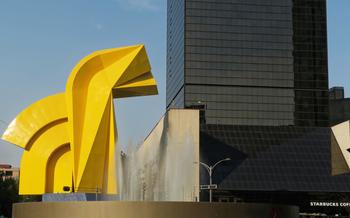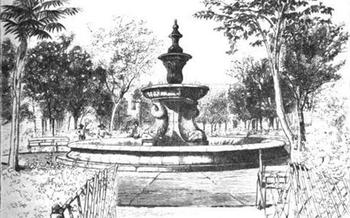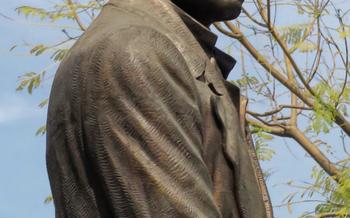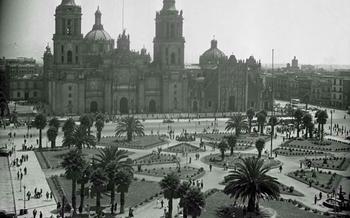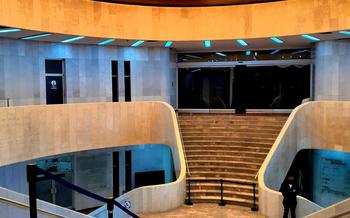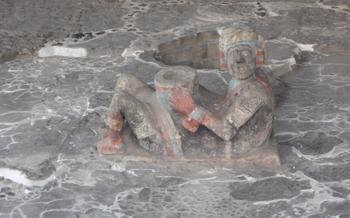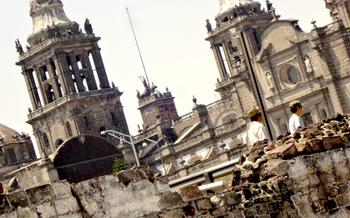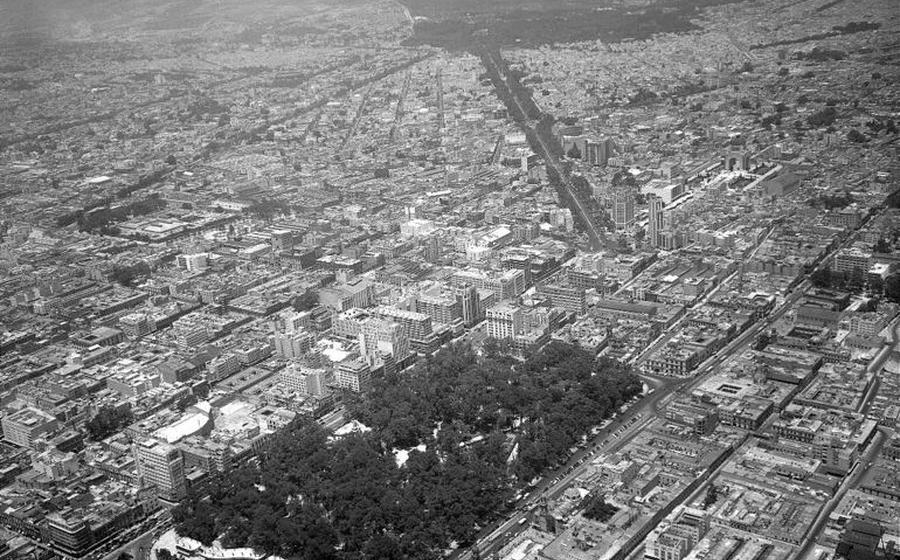
Alameda Central
- Alameda Central: A Historical Haven in the Heart of Mexico City
- Strolling Through Time: Exploring the Alameda's Rich History
- A Place of Beauty: Unveiling the Alameda's Stunning Architecture
- A Haven for Nature Lovers: Exploring the Alameda's Lush Gardens
- Literary Legacy: Uncovering the Alameda's Connection to Mexican Literature
- Culinary Delights: Savoring the Flavors of the Alameda
- Shopping Spree: Discovering Unique Treasures in the Alameda
- Historical Landmarks: Uncovering the Alameda's Hidden Gems
- Accessibility for All: Ensuring an Inclusive Experience
- Safety Tips: Ensuring a Secure Visit to the Alameda
- Insider Tip: Discovering the Secret Garden
Alameda Central: A Historical Haven in the Heart of Mexico City
The Alameda Central, a sprawling urban oasis nestled in the heart of Mexico City, invites visitors to embark on a journey through time, culture, and nature. Once an Aztec marketplace, the Alameda underwent a dramatic transformation during the colonial era, becoming a popular promenade and gathering place for the city's elite. In the 19th century, it emerged as a symbol of Mexican independence and a stage for pivotal historical events. Today, the Alameda stands as a vibrant cultural hub, offering a harmonious blend of history, art, and recreation.
Easily accessible by public transportation or on foot, the Alameda is a short stroll from the historic center and other major attractions. Its central location makes it an ideal starting point for exploring the city's rich cultural heritage.
The park's layout is a testament to its storied past. Wide, tree-lined paths converge at picturesque plazas adorned with ornate fountains and sculptures, creating a serene and inviting atmosphere. The Alameda's lush gardens, teeming with diverse plant life, provide a welcome respite from the bustling city streets, offering visitors a tranquil oasis to relax, unwind, and soak in the beauty of nature.
Strolling Through Time: Exploring the Alameda's Rich History
The Alameda Central's history is as rich and captivating as the park itself. Its roots can be traced back to the pre-Hispanic era when it served as a ceremonial center for the ancient Aztecs. During the colonial period, it was transformed into a public market, a bullfighting ring, and a popular gathering spot for the city's elite. The park played a crucial role in Mexico's fight for independence, serving as a meeting ground for revolutionaries and a symbol of freedom. In the modern era, the Alameda underwent a major revitalization, becoming a vibrant cultural hub and a beloved destination for both locals and visitors alike.
A Place of Beauty: Unveiling the Alameda's Stunning Architecture
The Alameda Central is not just a green oasis in the heart of Mexico City; it is also home to some of the city's most iconic architectural landmarks. The Hemiciclo a Juárez stands proudly at the park's northern entrance, honoring the legacy of former president Benito Juárez. This magnificent neoclassical monument features a towering column topped with a statue of Juárez, surrounded by allegorical figures representing Liberty, Justice, and Law.
Another architectural highlight is the Fuente de la Diana Cazadora (Fountain of the Huntress Diana), located at the park's southern end. This iconic fountain features a bronze statue of the Roman goddess Diana, poised gracefully atop a cascading waterfall. Surrounded by lush vegetation and colorful flower beds, the fountain has become a symbol of Mexico City's vibrant energy.
Adjacent to the Alameda, visitors can admire the grandeur of the Palacio de Bellas Artes (Palace of Fine Arts). This masterpiece of Art Nouveau architecture houses some of Mexico's most important cultural institutions, including the National Museum of Architecture, the National Theater, and the National Opera. Its ornate façade, stained glass windows, and opulent interior make it a must-see for any visitor to Mexico City.
These are just a few of the architectural treasures that await visitors to the Alameda Central. As you stroll through the park, take time to appreciate the beauty of these historic buildings, which add to the charm and allure of this beloved urban oasis.
A Haven for Nature Lovers: Exploring the Alameda's Lush Gardens
Nestled amidst the vibrant energy of Mexico City, the Alameda Central offers a sanctuary of tranquility with its lush gardens and tranquil atmosphere. Visitors can wander through the park's meticulously manicured paths, surrounded by a diverse array of plant life that adds color and fragrance to the air. Ornamental fountains, sculptures, and monuments dot the landscape, creating a harmonious blend of art and nature.
The Alameda's gardens are a haven for nature lovers, offering a rich tapestry of plant life that showcases Mexico's diverse flora. Majestic trees, including centuries-old ahuehuetes (Montezuma cypress), provide shade and a sense of grandeur. Colorful flowerbeds burst with vibrant hues, attracting butterflies and hummingbirds. Visitors can also admire a variety of cacti and succulents, showcasing the unique beauty of Mexico's desert regions.
The gardens are not just visually stunning but also provide a habitat for a variety of wildlife. Squirrels scamper through the trees, while birds flutter among the branches, adding to the park's lively ambiance. Visitors can also spot lizards basking in the sun or turtles swimming in the fountains, creating a sense of harmony between the natural and urban worlds.
Literary Legacy: Uncovering the Alameda's Connection to Mexican Literature
The Alameda Central has served as a muse to some of Mexico's most renowned writers, leaving an indelible mark on the nation's literary landscape. In the 17th century, Sor Juana Inés de la Cruz, a renowned poet and nun, frequented the Alameda, finding inspiration in its serene beauty. Her works, infused with a deep appreciation for nature and the human condition, often alluded to the Alameda's tranquil gardens and vibrant atmosphere.
During the 19th century, José Joaquín Fernández de Lizardi, a prolific novelist and journalist, captured the essence of the Alameda in his writings. His novels, which often explored social and political issues, featured the Alameda as a backdrop, reflecting the park's significance as a gathering place for people from all walks of life.
In the early 20th century, Manuel Gutiérrez Nájera, a renowned poet and essayist, immortalized the Alameda in his works. His poems, imbued with a sense of nostalgia and longing, evoked the park's rich history and its role as a witness to the city's transformation.
To this day, the Alameda continues to inspire contemporary Mexican writers, who find solace and creativity amidst its verdant surroundings. The park's literary legacy lives on, weaving a rich tapestry of stories and experiences that celebrate its enduring charm and cultural significance.
Culinary Delights: Savoring the Flavors of the Alameda
Indulge your taste buds with the culinary delights that the Alameda has to offer. From traditional Mexican cuisine to international culinary options, there's something to satisfy every palate.
For a taste of authentic Mexican flavors, head to one of the many food stalls lining the park's perimeter. Here, you can savor mouthwatering tacos, enchiladas, and tamales, all freshly prepared using traditional recipes. Don't miss the chance to try the local specialty, chiles en nogada, a unique dish made with poblano peppers stuffed with picadillo, walnuts, and pomegranate seeds, all smothered in a creamy walnut sauce.
If you're looking for something a bit more refined, the Alameda offers a selection of excellent restaurants and cafés. From cozy bistros to elegant fine-dining establishments, there's no shortage of options to choose from. Many restaurants offer outdoor seating, allowing you to enjoy your meal while basking in the park's serene atmosphere.
For a quick and affordable bite, grab a snack from one of the many street food vendors that dot the park. Here, you can find everything from fresh fruit and churros to traditional Mexican snacks like elote (grilled corn on the cob) and tlacoyos (masa cakes filled with beans and cheese).
No matter what your culinary preference, the Alameda has something to offer. So come hungry and prepare to savor the delicious flavors that this vibrant park has to offer.
Shopping Spree: Discovering Unique Treasures in the Alameda
The Alameda Central offers a delightful opportunity to indulge in a shopping spree, as it is surrounded by a vibrant array of artisan markets, souvenir shops, and local crafts and textile stores. For those seeking unique and authentic souvenirs, the Alameda's markets are a treasure trove of handcrafted goods, from intricate silver jewelry and colorful textiles to traditional Mexican pottery and hand-painted crafts. Visitors can haggle for the best prices and support local artisans while immersing themselves in the vibrant atmosphere of these bustling marketplaces.
Nestled amidst the shops, one can find antique and vintage stores that house a fascinating collection of vintage clothing, furniture, and home décor items. These quaint shops offer a glimpse into Mexico's rich history and provide an opportunity to unearth hidden gems that add a touch of nostalgia and charm to any home. Whether you're looking for a unique piece of jewelry, a handcrafted souvenir, or a vintage treasure, the Alameda Central's shopping scene has something to offer every visitor.
Historical Landmarks: Uncovering the Alameda's Hidden Gems
Beyond its iconic monuments, the Alameda Central boasts a treasure trove of hidden historical landmarks that offer a glimpse into Mexico City's rich past.
- Hemiciclo a Cristóbal Colón: Erected in 1877, this impressive monument honors Christopher Columbus, who is widely credited with discovering the Americas.
- Monumento a Benito Juárez: This grand monument, built in 1887, pays tribute to Benito Juárez, one of Mexico's most revered presidents, who played a pivotal role in the country's fight for independence.
- Fuente del Salto del Agua: This ornate fountain, constructed in 1779, features a dramatic sculpture of a man wrestling an alligator, symbolizing the strength and resilience of the Mexican people.
- Monumento a la Madre: This poignant monument, inaugurated in 1949, honors the role of mothers in Mexican society, depicting a woman cradling her child with love and devotion.
Accessibility for All: Ensuring an Inclusive Experience
The Alameda Central is committed to providing an inclusive environment that welcomes visitors of all abilities. The park's pathways are wheelchair-accessible, ensuring that individuals with limited mobility can navigate the grounds with ease. Braille signage is strategically placed to assist visually impaired visitors, guiding them through the park's attractions and landmarks. Audio guides are also available for those who prefer a more immersive and informative experience.
Designated parking spaces are allocated near the park's entrances, catering to visitors with disabilities. These spaces are conveniently located to minimize the distance individuals need to travel to enjoy the park's offerings. Additionally, well-lit pathways illuminate the park at night, enhancing safety and accessibility for all.
Safety Tips: Ensuring a Secure Visit to the Alameda
The Alameda Central, like any bustling urban park, requires visitors to remain vigilant to ensure a safe and enjoyable experience. While the park is generally considered safe during daylight hours, it's advisable to maintain situational awareness and take necessary precautions. Avoid isolated areas, particularly after sunset, and refrain from displaying valuables openly. Stick to well-lit pathways and be mindful of your surroundings. If you encounter any suspicious activity or feel uncomfortable, approach a park ranger or security guard for assistance. By following these simple safety tips, you can fully immerse yourself in the wonders of the Alameda Central without compromising your well-being.
Insider Tip: Discovering the Secret Garden
Venture beyond the bustling pathways of the Alameda Central and uncover a hidden gem – a secret garden nestled near the Museo Nacional de Arte. This tranquil oasis, tucked away from the madding crowds, offers a serene sanctuary for relaxation and contemplation. Immerse yourself in the lush greenery, vibrant blooms, and the gentle murmur of water fountains. Escape the cacophony of the city and find solace in the embrace of nature's tranquility. Embrace the opportunity to unwind, gather your thoughts, and savor the simple pleasures of life amidst the vibrant tapestry of the Alameda Central.
